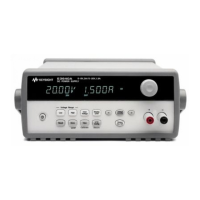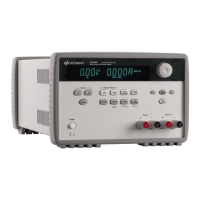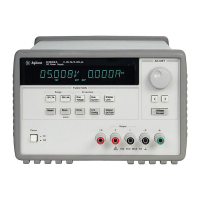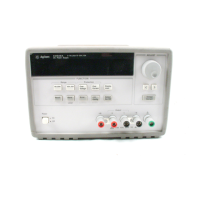Chapter 3 Front-Panel Operation and Features
Programming Overvoltage Protection
56
Checking OVP Operation
To check OVP operation, raise the output voltage to near the trip point. Then very
gradually increase the output by turning the knob until the OVP circuit trips. This will
cause the power supply output to drop to near zero, the
OVP1 or OVP2 annunciator
to flash depending on the output operated, and the
CC annunciator to turn on. The
“OVP1 (or OVP2) TRIP” message also appears on the display.
Clearing the Overvoltage Condition
When the OVP condition occurs, the OVP1 or OVP2 annunciator flashes. When it
was caused by an external voltage source such as a battery, disconnect it first. Clear
the overvoltage condition by adjusting output voltage level or by adjusting OVP trip
level.
The following steps show you how to clear the overvoltage condition and get back to
normal mode operation. In the following steps, the display will go back to “OVP1
(or OVP2) TRIP” if you let the display time out after about several seconds.
1 Lower the output voltage level below the OVP trip point.
The
OVP and Limit annunciators are flashing after key is pressed.
2 Check that you lowered the voltage level below the OVP trip point.
The OVP trip point is displayed. Do not adjust the trip point at this step.
3 Select the OVP CLEAR mode by turning the knob.
By Adjusting output voltage level
OVP ON
OVP CLEAR

